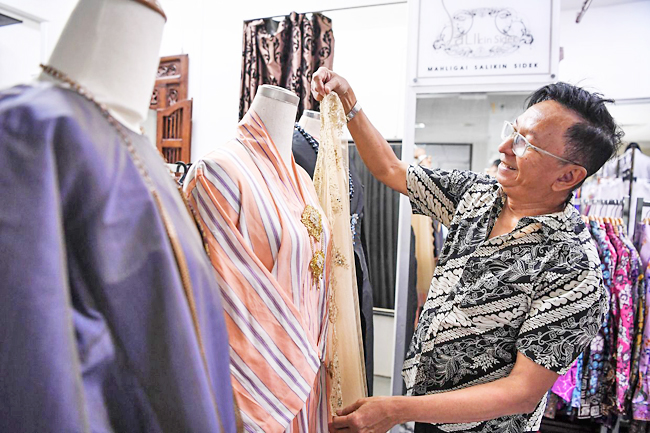BERNAMA – Not many people may have heard about limar textiles, as they are not as well-known as other types of songket fabrics. But it is a part of Malay textile heritage that deserves to be celebrated and treasured.
Limar is expensive to produce due to the silk thread binding techniques used in weaving the textile, which also incorporates intricate motifs, gold threads and an elaborate dyeing process.
Once upon a time, limar was popular among the nobility and royal families in Kelantan and Terengganu.
In view of its exclusivity and value, Malaysian fashion designer Salikin Sidek, 60, was willing to spend over MYR10,000 just to have a limar fabric, said to be more than 150 years old, in his possession.
He said the textile’s delicate weaving technique and meticulous craftsmanship were among the factors that compelled him to acquire it from a textile collector in Yogyakarta, Indonesia, 10 years ago.
“This limar fabric has very high sentimental value for me, especially since it is a legacy from the nobility. As someone who is passionate about collecting textiles, I sought it out for my personal collection,” he told Bernama recently.

Salikin Sidek, who owns a boutique called Mahligai Salikin Sidek and is known for his expertise in designing traditional Malay attire, said as an owner of heritage fabrics like limar, the main challenge he faces is maintaining and preserving them so that they remain in good condition and do not deteriorate.
“I’ve wrapped and rolled the limar cloth with a piece of belacu cloth because it is made of natural fibres which would ensure the limar fabric is not exposed to heat… heat can easily deteriorate the fabric.
“I’ve kept my prized possession in a clean cupboard where it will remain safe,” he said.
Malaysian Traditional Textile Lovers Association (CITRA) Committee member Salikin added he is now producing new limar fabrics to add to his personal collection, which is expected to grow in value in the future.
Salikin also said limar fabrics are no longer limited to the nobility and royalty and that anyone who can afford their price tags can use them now.
“When we weave new limar cloth, its quality is better than its heritage equivalent. Although newly woven, we can still maintain the original features and craftsmanship to preserve its authentic identity. I’m hiring weavers from Palembang, Indonesia, who can produce good quality authentic limar fabrics with traditional designs,” he said.
He also said the value of heritage limar fabrics would depend on when they were produced.
“The older it is, the more expensive it becomes,” he said, adding meticulous care is key to the fabric’s durability.




